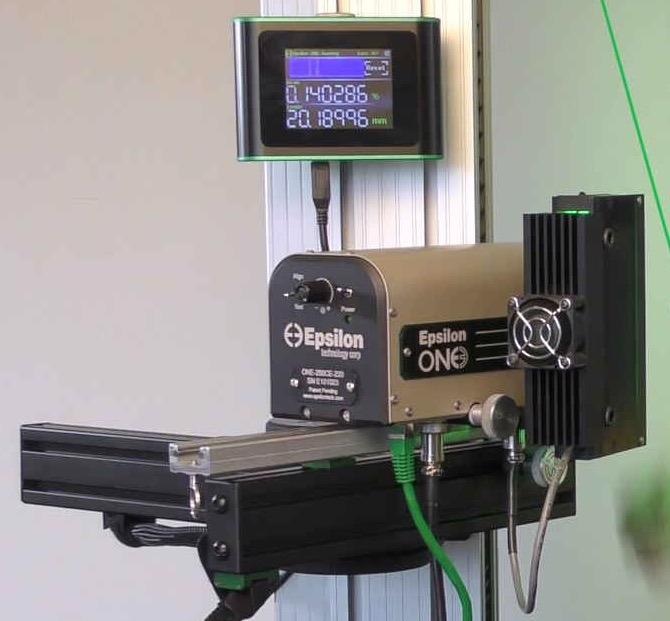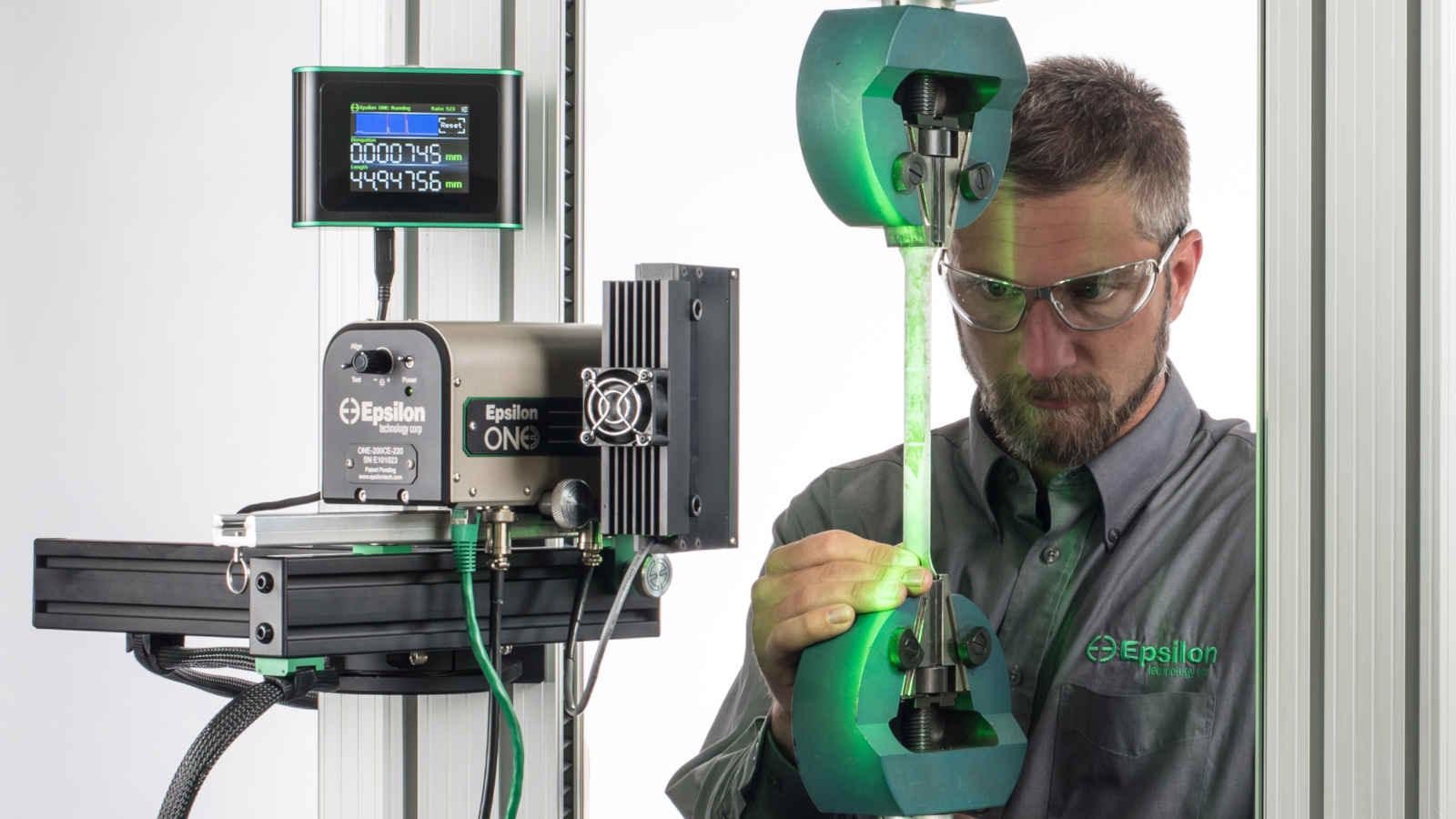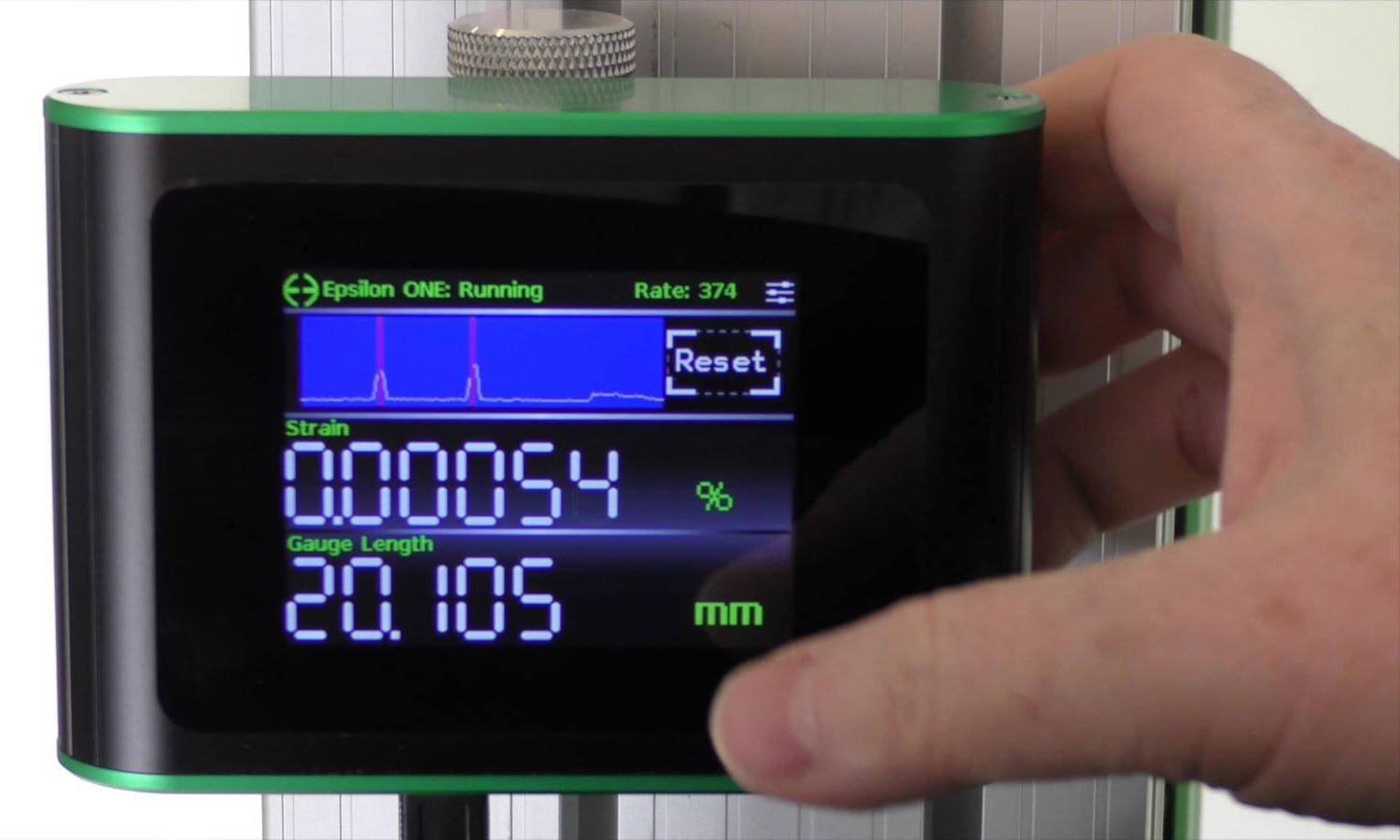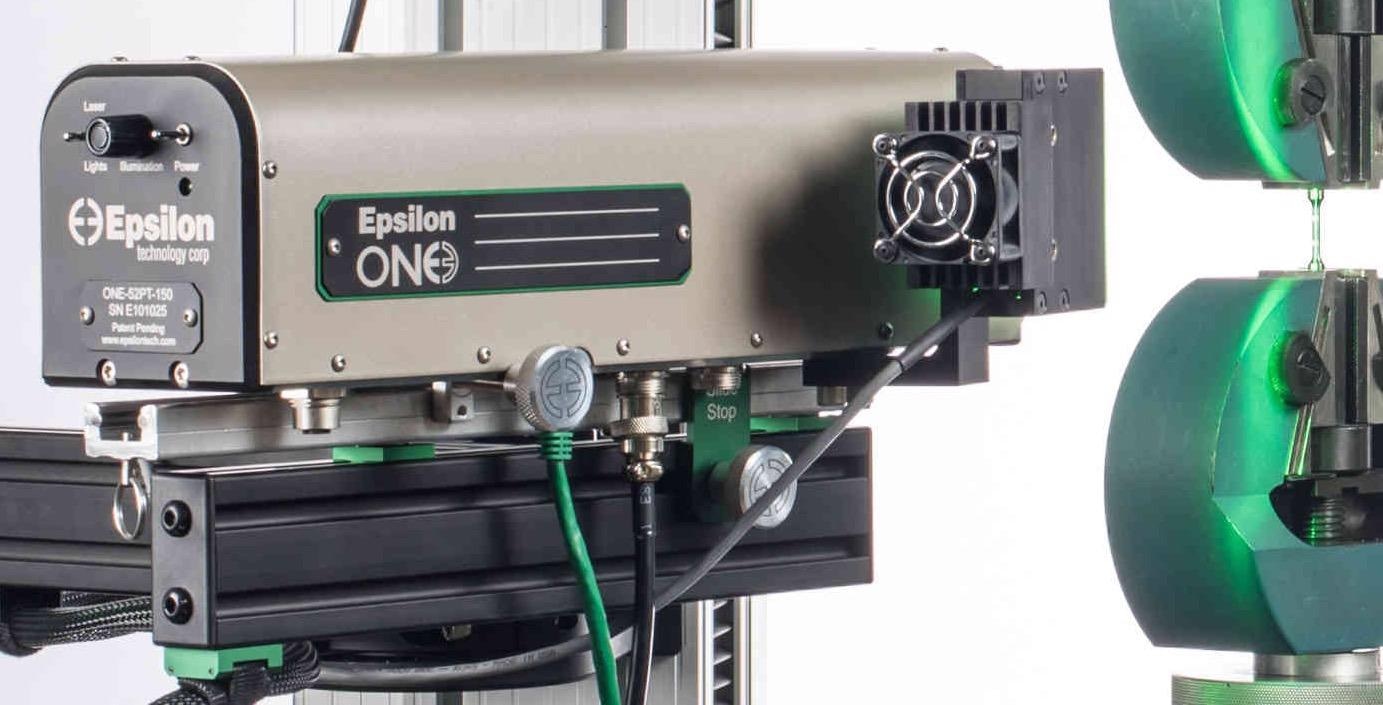At Tinius Olsen, Shawn's focus is on materials testing and the application of numerous standards to different testing platforms, which help to assess products and materials.

Image Credit: Tinius Olsen
He is a member of ASTM Committees D30 on Composite Materials, C09 on Concrete and Concrete Aggregates, F16 on Fasteners and E28 on Mechanical Testing.
He has also completed various Nadcap, American Association for Laboratory Accreditation and ISO, and is involved with independent testing labs in China, India, the United States and Singapore.
Video Extensometry
A new generation of non-contact extensometers are coming to the fore because of the video extensometer and its improvements in both video technology and computer software.
Video extensometers have several benefits; they give users more flexibility and the best available accuracy over a wide range of applications.
A video extensometer is a non-contact strain measurement device that has no contributing influence on the specimen being tested. A VE works by measuring the strain on material samples. Specimens are often provided with lines, dots or various patterns of black-and-white marks. The sensors and software algorithms within the video extensometer detect the motion of these marks and thus the change in length/displacement during the test.
Shawn Byrd, Technical Manager, Tinius Olsen
"Brittle or thin materials benefit particularly from this non-contact solution, as well as samples that release energy at failure, such as a boost at break with cables, ropes or belts. Measurements inside a thermal cabinet or environmental test chamber are also included," added Byrd.

Image Credit: Tinius Olsen
The Epsilon One is easily applied to all Tinius Olsen machines and is a perfect example of a modern video extensometer. It is inclusive of electro-mechanical and hydraulic platforms. It can be configured for R&D in addition to commercial and academic laboratories.
It can achieve accuracy levels of ASTM E83 class B-1 and ISO 9513 class 0.5. The system also possesses a laser-assisted alignment feature which speeds up sample placement and it is designed for quick repetitive testing.
"It has numerous material applications, including metals, plastics, composites, elastomers. It also has ease of mounting, laser alignment as well as always on and real time analysis."
"The technology also works well for tests where elongation and variation of section measurement are needed, as well as tests where transverse elongation and r & n values are required for ISO 10113 and ISO 10275. In addition, various high strain, small sample geometry is a great candidate for a video extensometer."
Recent improvements in image analysis software and video technology, for example, Tinius Olsen's own Horizon product, have seen materials testing system manufacturers focus on video extensometers (VE) to supply accurate measurement for various specific applications.
They are particularly effective where contact extensometers might have an adverse effect on accuracy or test results.
"Video Extensometers have been around since the early 1990s, with the latest VE technology instruments an attractive replacement for mechanical extensometers, laser-scanning systems and strain gauges."
"They offer many benefits and provide a number of advantages compared with traditional contacting devices This includes no influence on the test specimen, negating errors due to worn or damaged parts or inertia from moving parts and no damage as a result of energy release at failure."
However, VE technology's biggest advantage is its versatility. It is easy to use. One camera can be utilized for both longitudinal and transverse strain measurement with just a simple alignment and adjustment of the test axis.
The technology enables numerous fields of view, in addition to multiple material and strain tests and real-time viewing and analysis. As no load is introduced into a sample, break and slippage from knife edge engagement is not an issue.
Application
VE is ideal for a large variety of applications. The technology is particularly suited for rigid materials like composites and metals; a wide variety of other materials also lend themselves to non-contact tensile strain measurement, for example, textiles, paper, plastics, thin sheets, foils and wires.
"The technology is appropriate for conducting a variety of test procedures such as the measurement of material properties and true strain controlled tensile tests. It also includes exploration of cracks, investigation of strain behaviour on dynamic tensile tests, dynamic and high-speed tests and vibration analysis."

Image Credit: Tinius Olsen
For instance, an R&D lab carries out tension and compression tests on a wide range of materials, from elastomers and plastics to metal and wood. It has several different traction machines with different interfaces and multiple gauges that use different technologies and ranges.
"Of all the available extensometer solutions, only VE offers the versatility and adaptability to meet all of the testing laboratory's needs. It enables the lab to conduct tests that measure only a few millimetres with an accuracy of 0.1 µm, up to 100 millimetres, with only two focal lengths. With its digital and analog interfaces, VE is compatible with all of the lab's tensile test machines."
"VE also solves many of the problems that can occur when a specimen has relatively soft edges like a thermoplastic or has features that can rupture or break, causing damage to a clip on an extensometer. Overall, VE provides users with a high-performance, high-accuracy and reliable solution for a host of test and measurement applications."
Operation
In order to make highly precise strain measurements of a range of specimen types, video extensometry incorporates a high-resolution digital camera with advanced real-time image processing.
The video camera captures the image, which is then transferred via an IEEE 1394 (Firewire) interface to a laptop, computer or PC.
By measuring the change in distance between two line markers that are applied to the test specimen with a sticker, color marker or clamp, longitudinal strain is established. A variety of optional target applicators and marking pens are available.

Image Credit: Tinius Olsen
The video extensometer can establish the position of the markers through changes in the brightness of the light or dark edges of the markers. The camera digitizes the image, and image analysis algorithms calculate the alteration in grayscale along one image line on the specimen surface.
These algorithms enable the instrument to measure edge positions with sub-pixel accuracy.
The transverse deformation is calculated from the measured alteration in the width of the specimen. Gauge length is measured automatically at the start of each test and is utilized for strain calculation, eliminating errors from inaccurate specimen marking.
An analog or digital interface is utilized to transfer the measured values from the video extensometer to a tensile test machine.
The tensile testing machine can record and post process every measurement in the same way as other strain sensors or gauges. Usually, the E-modulus and Poisson's ratio are calculated.
Features and Capabilities
In addition to a large variety of options for data communications, management and export, the current generation of VE equipment features configurable, modern and intuitive user interfaces. To achieve a low processor load, its multithread-analysis-kernel supports multi-core processors.

Image Credit: Tinius Olsen
Numerous templates are available for different measurement tasks, and connecting a video extensometer to a tensile testing machine also enables fully automatic operation.
VE is capable of significantly different accuracy and sampling rates depending on the type of camera (high speed or high accuracy).
The fast version camera provides VGA resolution, a 0.02% strain (10 µm @ 100 mm Fow), and a 4000 Hz sampling rate, while the high-accuracy, 2-megapixel camera's accuracy is 0.002% strain (1 µm @ 100 mm Fow) and the sampling rate is 50 Hz.
"Of all the available extensometer solutions, only VE offers the versatility and adaptability to meet all of the laboratory's needs. With it, the lab can conduct tests that measure only a few millimetres with an accuracy of 0.1 µm up to 100 millimetres, with only two focal lengths. With its digital and analog interfaces, VE is compatible with all of the lab's tensile test machines."
"VE also solves many of the problems that can occur when a specimen has relatively soft edges like a thermoplastic or has features that can rupture or break and cause damage to a clip on extensometer. Overall, VE provides users with a high-performance, high-accuracy and reliable solution for a host of test and measurement applications."
"The best choice for a particular material or application might not be the right choice for another. Keeping that mind, given recent improvements in both hardware and software, extensometer users need to seriously consider video extensometers based on their flexibility, versatility, reliability and cost-effectiveness over a wide range of materials and applications."

This information has been sourced, reviewed and adapted from materials provided by Tinius Olsen.
For more information on this source, please visit Tinius Olsen.